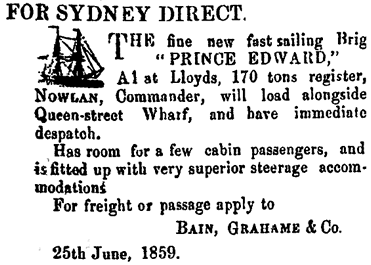The highest quality.
A1 at Lloyd’s
What's the meaning of the phrase 'A1 at Lloyd's'?
What's the origin of the phrase 'A1 at Lloyd's'?
The phrase was originally literal in nature, as A1 at Lloyd’s was a category of ship in Lloyd’s Register of Shipping, which used an alphanumeric code to classify ships for insurance purposes. A1 denoted the highest quality vessels. The classification was defined in the Register itself:
“The character A denotes New ships, or Ships Renewed or Restored. The Stores of Vessels are designated by the figures 1 and 2; 1 signifying that the Vessel is well and sufficiently found.”
The name Lloyd’s comes from Edward Lloyd, the proprietor of a London coffee house that he opened in Tower Street in 1688, later moving to Lombard Street. Lloyd encouraged a clientele of ships’ captains, merchants and ship owners and provided printed sheets containing information about shipping as a service to them. Edward Lloyd died in 1713 but the business continued and in 1760 some of the customers formed into the Register Society. In 1764 they printed the first Register of Ships, as a reference resource for the insurance and shipping businesses. The international insurance market, Lloyd’s of London, also has its roots in Lloyd’s coffee house, but is otherwise unrelated to Lloyd’s Register.
The organisation became Lloyd’s Register of British and Foreign Shipping in 1834, when the first classification rules were published, and it is from that date that we can say the phrase was coined.
The owners of vessels were soon at pains to advertise any ship that was given the highest classification, as in this ad from 1859 in the New Zealand newspaper The Daily Southern Cross.
The history of “A1 at Lloyd ‘s” in printed materials
Trend of a1 at lloyd ‘s in printed material over time
Related phrases and meanings
Browse more Phrases
About the Author

Phrases & Meanings
A-Z
A B C D E F G H I J K L M N O P Q R S T UV W XYZ
Categories
American Animals Australian Bible Body Colour Conflict Death Devil Dogs Emotions Euphemism Family Fashion Food French Horses ‘Jack’ Luck Money Military Music Names Nature Nautical Numbers Politics Religion Shakespeare Stupidity Entertainment Weather Women Work
How did we do?
Have you spotted something that needs updated on this page? We review all feedback we receive to ensure that we provide the most accurate and up to date information on phrases.
